Dustbuster Upgrade
An old Dustbuster gets a new lease on life when its worn 9.6V NiCad battery is replaced with a 11.1V Lithium Ion battery.
An old Dustbuster gets a new lease on life when its worn 9.6V NiCad battery is replaced with a 11.1V Lithium Ion battery.
To make the experience fit your profile, pick a username and tell us what interests you.
We found and based on your interests.
An old and tired Dustbuster BHD9600CHV is now upgraded with the power module of a NEXTEC LED work light. The eight-cell nickel-cadmium rechargeable battery pack built into the Dustbuster is gone since it could no longer deliver anywhere near its 9.6 nominal voltage rating. Now cordless power comes courtesy of the NEXTEC three-cell lithium-ion battery sending nominal 11.1 volts to the motor.
And what an upgrade it is! It now generates enough vacuum to pick up anything we can expect a small handheld vacuum to handle. It is now genuinely useful again and the handle blended well enough that ergonomics didn’t take a hit as I had feared. But all is not well; this upgraded super powerful Dustbuster now hints that there may be such a thing as too muchpower.

The massively increased airflow is great for picking up messes, but all that air pulled into the vacuum has to exit through the exhaust. This massively increased exhaust has become a new problem that didn’t exist before. Vacuuming small objects off a surface now requires a bit of planning in terms of approach angle and the distance at which we turn on the power to the motor. Approach too shallow or turn the motor on too early, and the exhaust airflow will reach the object before the vacuum side can pick it up.
When this happens to small objects, say picking up a few peanuts on the ground, it means the peanuts run away and we have to chase it down. But when it happens to a loose clump of light objects, say an area filled with dust bunnies, it means the exhaust blows everything up into the air and we end up with an even bigger mess on our hands.
So yes, this is now a massively more powerful handheld vacuum, but that new power has consequences.
(Cross-posted to NewScrewdriver.com)
After waiting 24 hours, the adhesive should be fully cured. First the clamp holding the trimmed Dustbuster body to the NEXTEC battery compartment was removed. Then the screws holding the two halves together were removed. Finally the big moment: try to pull the two halves apart. If they were accidentally glued shut, it’ll be difficult to put all the components back inside the case.
With a soft pop, they opened up. The pieces that we’d want to stay together stayed together, and the parts that we want to separate separated. Whew!
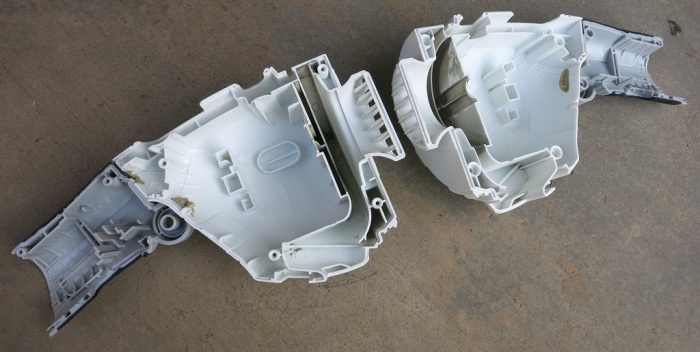
From there it was straightforward to reinstall all the necessary components back in. Then the soldering iron was warmed up to make the electrical connections. The new wires are thicker gauge than the original wires, but it makes sense to upgrade the wires due to the increased battery voltage.

As a cleanup task, the former charging port’s connection to the motor frame were severed. This avoids any accidental charging of the new lithium battery pack at nickel cadmium battery voltages. We’re keeping the charging connector plate solely for cosmetic reason of not leaving an empty hole in the bottom of the enclosure.
Before putting the two halves back together, it was wise to perform a quick test with the battery to verify the switch functioned and the motor is turning in the correct direction. The final step is to put the two halves back together and reinstall all the screws.

This old Black & Decker Dustbuster is now powered by the Sears Craftsman NEXTEC battery system. It is definitely far more powerful than a week ago on weakened Ni-Cad battery cells. And likely far more powerful than when it was new. It may even be more powerful than its modern successors, as a search indicated they are running on two-cell lithium-ion batteries instead of our three-cell upgrade.
(Cross-posted to NewScrewdriver.com)
All the investigation and planning has led to this point: cutting apart the old Dustbuster and the unused NEXTEC LED work light so we can put them together into a NEXTEC-powered Dustbuster. Time to deploy the Dremel and install the cutting wheel!
First the components are set out. The original plan, outlined in red, was to cut off the Dustbuster handle up to the flat internal brace, and cut the work light hinge so it will clear the Dustbuster body.

The handle cutoff was straightforward, and once the handles were cut off the pieces could be put up against each other. Once in place the Dustbuster body curvature was found to be more complex than originally expected, making it tough to cut the LED work light body to fit. However, the work light hinge mechanism is a simple cylinder that is almost the same diameter as the Dremel cutting wheel. It would be much easier to cut a scallop into the Dustbuster body to accommodate the cylinder so that became the new plan. (Red arrows.)

While the now-exposed flat brace inside the Dustbuster body is indeed flat, the front face of the work light body turned out not to be perfectly flat. As a result they didn’t mate flush so we’ll needed adhesive that can bridge small gaps. A search of adhesives already in the workshop nominated the Loctite construction adhesive for the job. While applying the glue, the center had to be avoided since we don’t want to glue the two halves together.
The instruction for the adhesive said to brace the joints with physical force while it cures over 24 hours. So the two parts will be held together with a small clamp while we wait.

(Cross-posted to NewScrewdriver.com)

We’ve disassembled both devices and can start with some loose test fits for spacing. Here’s an arrangement that removes as little plastic as possible. It keeps most of the Dustbuster handle and attaches the work light body to the end. Physically this design would be very long and has a lot of wasted space. Let’s tighten things up.

We want to keep the Dustbuster switch, so we’re not willing to cut any forward than that. We don’t care about the work light switch, so we can cut that off. In fact everything is fair game up until the battery connector which we want to keep. Pushing the battery connector plate all the way up against the Dustbuster switch gives us the most compact layout feasible.
This will work from a component layout perspective, but it will be tricky to precisely cut all the pieces to fit. The industrial design of both devices have a lot of curves for us to deal with. However, they both have some flat surfaces we can try to use to make our work easier.

The Dustbuster has a flat brace just behind the switch. The work light has a flat surface where the battery compartment ends and the swivel LED begins. If we line them up, we should be able to attach the flat surfaces together. There will be more wasted space this way but the reduced fitting headaches should be worth the trade-off.
(Cross-posted to NewScrewdriver.com)
The next step is to disassemble the NEXTEC LED work light and see if we can use it to adapt the old Dustbuster to lithium-ion power.
The wish list of the disassembly operation are:
The things we don’t care about:
With these goals in mind we start with the obvious task of removing the four visible screws. After the screws were removed there was one more fastener: a small metal C-clip holding the two halves together near where the pinkie finger rests while holding the light. The clip was designed to require a specific tool for a clean removal. For people who are unconcerned about cosmetic damage, it could be persuaded to abandon its post with pliers.

Looking at the disassembled light, we see we can easily re-purpose the battery compartment and associated battery connector for the project. The third item on the wish list – the over-discharge protection circuit – is unfortunately incorporated onto the LED circuit board and not an easily separated part. We’ll just have to be careful when using the upgraded Dustbuster and not discharge it too much.
Having the battery compartment and electrical contacts is great. It bypasses a lot of iterative CAD work and 3D printing to pin down proper dimensions to fit the battery. The next step is to join the two devices together.
(Cross-posted to NewScrewdriver.com)
We’ve decided to leave behind both the degraded Ni-Cad battery and suspect simple charger. We will replace them with rechargeable lithium-ion batteries.
We have many lithium-ion battery designs to choose from. The different physical form factors are visually obvious, but there are also less visible internal differences. The motivation for these internal differences come from optimization for different usage scenarios. A battery with the wrong usage pattern could result in poor performance, poor battery life, or maybe even fire.
The first candidates are the battery cells extracted from dead laptop battery packs and occasionally used for small electronics projects. These cells were designed to hold a lot of charge then dispense power slowly and evenly over several hours of a laptop’s battery run time. A Dustbuster has a different discharge profile, pulling a lot of power in short bursts. They might not be happy together.
The next candidates are the batteries for remote-control hobbies. RC aircraft and cars are very hard on their battery packs, drawing high amount of power almost constantly over a period of time usually measured in minutes. There were some batteries on hand for small remote-control aircraft, but they could not sustain the amperage draw of the Dustbuster motor. While it is an option to buy some higher-amperage rated battery packs, and they would happily power a Dustbuster, but they are an expensive overkill.
We would prefer something between the above two extremes of the spectrum. Looking around at other lithium battery packs already available, attention settled on a set of cordless power tools powered by 12V lithium battery packs. (Sears Craftsman NEXTEC series.) A handheld vacuum has a power profile very similar to most power tools: short bursts of high power draw. The 12V nominal voltage is higher than the 9.6V of the old battery pack but close enough the motor should be OK as long as used in short bursts. And hopefully the higher voltage gives the vacuum a boost making it even more capable than new.
These cordless tools were purchased in a combination pack, all using the same NEXTEC battery. The LED work light is the least useful member of the pack in this household already full of LEDs. Let’s take it apart and see how we can use it to adapt a Dustbuster to run on the NEXTEC lithium-ion rechargeable battery pack.

(Cross-posted to NewScrewdriver.com)
Now that we’ve found enough evidence to suggest the battery was degraded by constant over-charging, there are a few options forward: repair, replace, or upgrade.

Repair
The first option is to try to repair the existing battery cells. The information on Wikipedia indicates the cells could be repaired by performing several deep discharge+charge cycles. This must be done on an individual cell basis, because deep discharge of a pack risks irreparable damage to the weaker cells from cell reversal. It would be time-consuming even if the equipment to automate this process is on hand.
Replace
The second option is to purchase new Ni-Cad battery cells and replace the degraded ones in the Dustbuster. Ni-Cad batteries are cheap, but assembling them into packs are usually done with the help of a small spot welder. In theory the battery tabs could be attached with a soldering iron, but it’s very difficult to solder a battery cell because the metal can acts as a heat sink drawing heat away from the solder joint. If too much heat goes into the battery cell chemicals, it will damage the battery.
Whether repaired or replaced, the existing power adapter that constantly overcharges the battery pack will need to be retired. What we would need is a good charger with a controller that knows how to properly charge a NiCad battery. Without this knowledge, we’ll quickly return to the same predicament with a battery pack ruined by overcharging.
Usually, when working on a project, it’s fun to buy new tools necessary for the job. Our candidates are:
Unfortunately, they’re all dealing with Ni-Cad battery cells, which has faded to niche applications and their use is not expected for future projects. The present (and foreseeable future) solution to portable battery are lithium-ion chemistry cells, and that’s the motivation for the next option:
Upgrade
Since the battery charger would need to be replaced anyway, that removes the main motivation to stay with an electrically compatible chemistry. Freed from that constraint, the most interesting path forward is to find a way to power this old Dustbuster with an entirely different type of battery.
Let’s bring this Dustbuster into the 21-st century with a lithium battery upgrade.
(Cross-posted to NewScrewdriver.com)
When embarking on a project to repair something, it’s always helpful to understand and articulate what went wrong so we have confidence we’re fixing the right thing. The starting point for this project is seeing this old Black & Decker BDH9600CHV Dustbuster trying to do its job: It couldn’t spin its motors fast enough to generate vacuum to pick up household debris. The most obvious suspect is the battery pack, so let’s examine the batteries.
Five small screws held the two halves of the vacuum enclosure together. Once the screws were removed, the two halves separated easily without any additional glue or plastic clips to worry about. The internals were as expected – a battery pack, hooked up to a switch, and wired to the motor driving the vacuum vanes.
The battery pack is built from eight nickel-cadmium (Ni-Cad) battery cells. Six arrayed around the motor, and two more tucked in the handle. The first hypothesis is that some of the cells have died. The cell voltage levels were probed as the motor spun, looking for any cells that has sunk to zero volts or possibly a cell-reversal situation. All eight cells delivered under 1 volt but well above zero, disproving the initial “dead cell” hypothesis.
The next hypothesis is battery memory effect. Technically the term applies to a very specific issue with Ni-Cad battery, but in popular use the term has become an umbrella for several different conditions that afflict Ni-Cad batteries.
The most promising item under the umbrella was “Voltage depression due to long-term over-charging”. The voltage has already been verified to be low but not zero. There should be a charging control circuit to prevent over-charging, perhaps that failed? A search came up empty: there didn’t seem to be a charge controller at all. The batteries seemed to be connected directly to the output of the charging stand AC power adapter.
The nominal voltage of this battery pack is 8 * 1.2V = 9.6V. The maximum output of this Dustbuster’s AC to DC adapter? 24V. Ouch! That’s significantly over nominal and the battery pack has been held at that level for years.
These circumstances imply this battery pack has indeed suffered under long-term over-charging. Explaining why it now deliver depressed voltage levels.
(Cross-posted to NewScrewdriver.com)
The subject of the upgrade is a handheld vacuum. Specifically a Black & Decker BDH9600CHV, a member of the "Dustbuster" line whose success defined a whole new product category.
A major factor of the success is their easy of use. Whenever there's a cleanup task, it's easy to pull the vacuum off its charging stand and clean up the mess. No need to pull a big heavy vacuum out of the closet, no need to look for the nearest plug. A small cordless handheld vacuum is very convenient and people are willing to pay for that convenience.
The basic design of a Dustbuster is straightforward: a battery pack hooked up to a motor controlled by a switch. As a result, the majority of the vacuum are durable and reliable thanks to their simplicity. With the notable exception of the battery pack. The battery pack is what makes the cordless vacuum possible and easy to use, but the battery is also the weakest link.
This particular Dustbuster had been sitting in the standby charging base and the battery power capacity gradually dwindled over the past few years. Now the battery pack, even when freshly charged off its charging stand, could only offer a little bit of power before the motor slowed down and couldn't generate enough vacuum to be useful.
In today's disposable society, it's easy to just throw away such a simple and inexpensive appliance and buy a new one. But where's the fun in that? Since the rest of the vacuum seems to be OK, the goal of the new project is to give this vacuum new life by some combination of repairing, restoring, and/or revamping the battery pack.
Let's open it up and see what we find...
(Cross-posted to NewScrewdriver.com)
Create an account to leave a comment. Already have an account? Log In.
Become a member to follow this project and never miss any updates
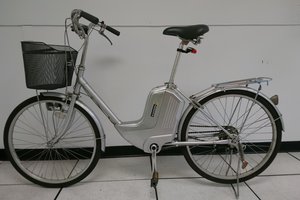
 Lucas Rangit MAGASWERAN
Lucas Rangit MAGASWERAN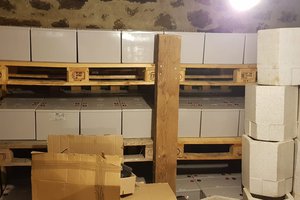
 Nathann
Nathann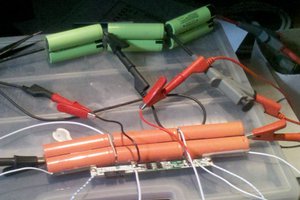
 ClimbinElectronics
ClimbinElectronics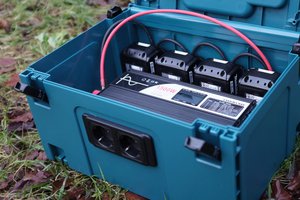
 Thijs Koppen
Thijs Koppen